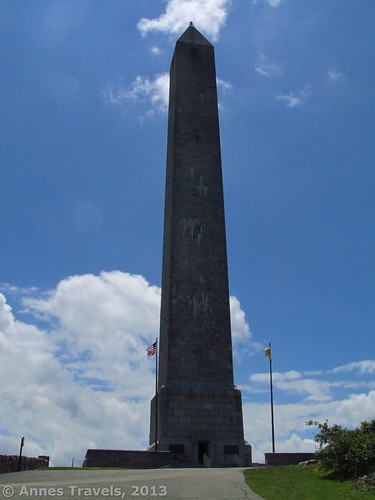
One of the interesting things about the Old Testament is how many things God gave the Israelites to remind them of what He had done. He gave them festivals: Passover, Succoth, and so on. He gave them signs and customs: circumcision, tassels, etc. He gave them rules and laws to live by: the Sabbath, laws about food and food preparation, and so forth. He gave them songs to sing that described his mighty acts and Who He was for them. He also gave them the Torah, which was read aloud, and which reminded them of His laws and His faithfulness and His mighty works.

Many of these signs and symbols were in front of the people at least weekly, often more than that. Sometimes, He would have the people build a monument to remember one of His powerful deeds by – everyone who walked down the road saw it and could remember what He’d done. (I’m thinking specifically of Joshua taking 12 stones from the middle of the Jordan River when God stopped up the water so that the Israelites could walk across on dry ground. See Joshua 4:1-10; 20-24.)

With so many reminders in front of them, it should have been hard for the Israelites to forget the God that brought them through thick and thin and made them into a powerful nation – a people so powerful that strong kings were terrified at their approach (and rightly so!) God knows that we’re human and that we forget things. So He gave His people events, laws, customs, and other things to trigger their memories and remind them – to keep it right in front of them – that He is with them and that He is a powerful God.

The good thing about these kinds of memorials is that they can stand for more than just their original intent. When we read about God moving powerfully in the Bible, it can be more than just a story of how God saved David out of Saul’s hand, for example – something in the story might remind us of when God saved us in a similar manner. Suddenly the story has gone from a nice true tale about someone we’ve never met into an exciting real-life experience that brings the story very close to home.

For example, I can’t think about being in the “cleft of the rock” (see Exodus 33:22) without remembering climbing up the Table Rock Trail in Maine. It’s a great story, but when you’ve literally been in a cleft of the rock, you know what it feels like, what it looks like, and why it would be a place for Moses to hide while God’s glory passed before Him.

Or the story of Jonathan and his armor-bearer at Mikmash, crawling up the cliff to the Philistine outpost (see 1 Samuel 13:23-14:14). I heard a story from WWII where soldiers were stationed in that area. Remembering the story from the Bible, the officer in charge took a very similar tactic and was able to route the enemy. Those soldiers will never forget that story or ever look at it the same again.

I can also think of stories and verses that only poetically relate to my own situations. For example, “When you walk through the waters, I will be with you; and when you pass through the rivers, they will not sweep over you” (Isaiah 43:2). If you’ve ever crossed a swift river, you know how comforting those verses can be. And sometimes, it feels like life is a bit of a swollen river, trying to drag you downstream!

We’re in the Christmas season – one of those events that keeps the New Covenant right in front of us. It’s one of God’s ways of reminding us that He is still powerful, still God With Us. It’s similar to, but different from, the festivals and laws of the book of Exodus.

I knew (and loved!) many babies growing up. It brings the story of Advent to life to realize that, like many other babies, Jesus might have given a toothless grin or reached out to grab your finger. That He had a beating heart, just like my friend’s baby, that you can feel when you hold them.

But unlike the impersonal laws and rules of the Old Testament, this is Immanuel, God With Us – He’s no longer a baby, but He’s still with us, living inside of us, all of the time. And that brings the story to life!






